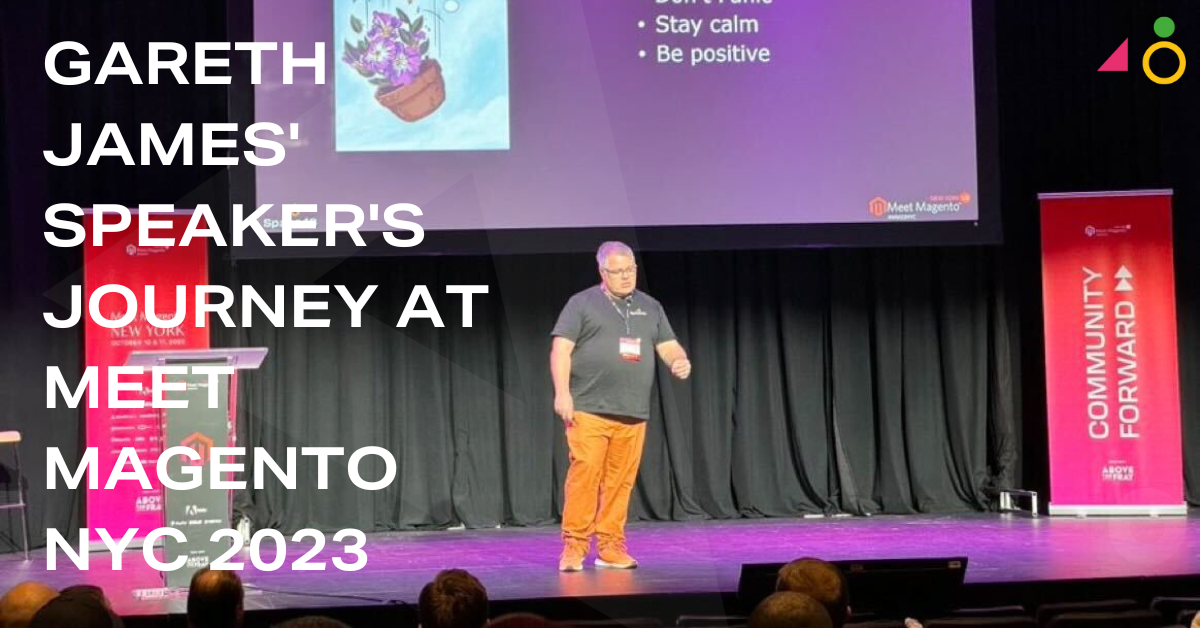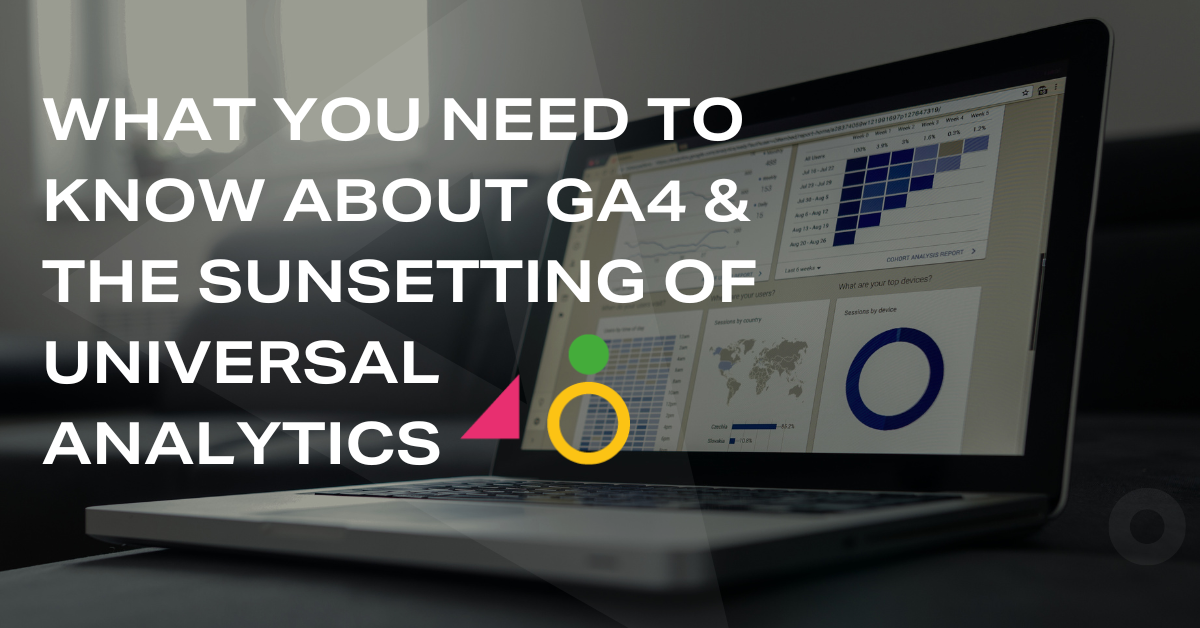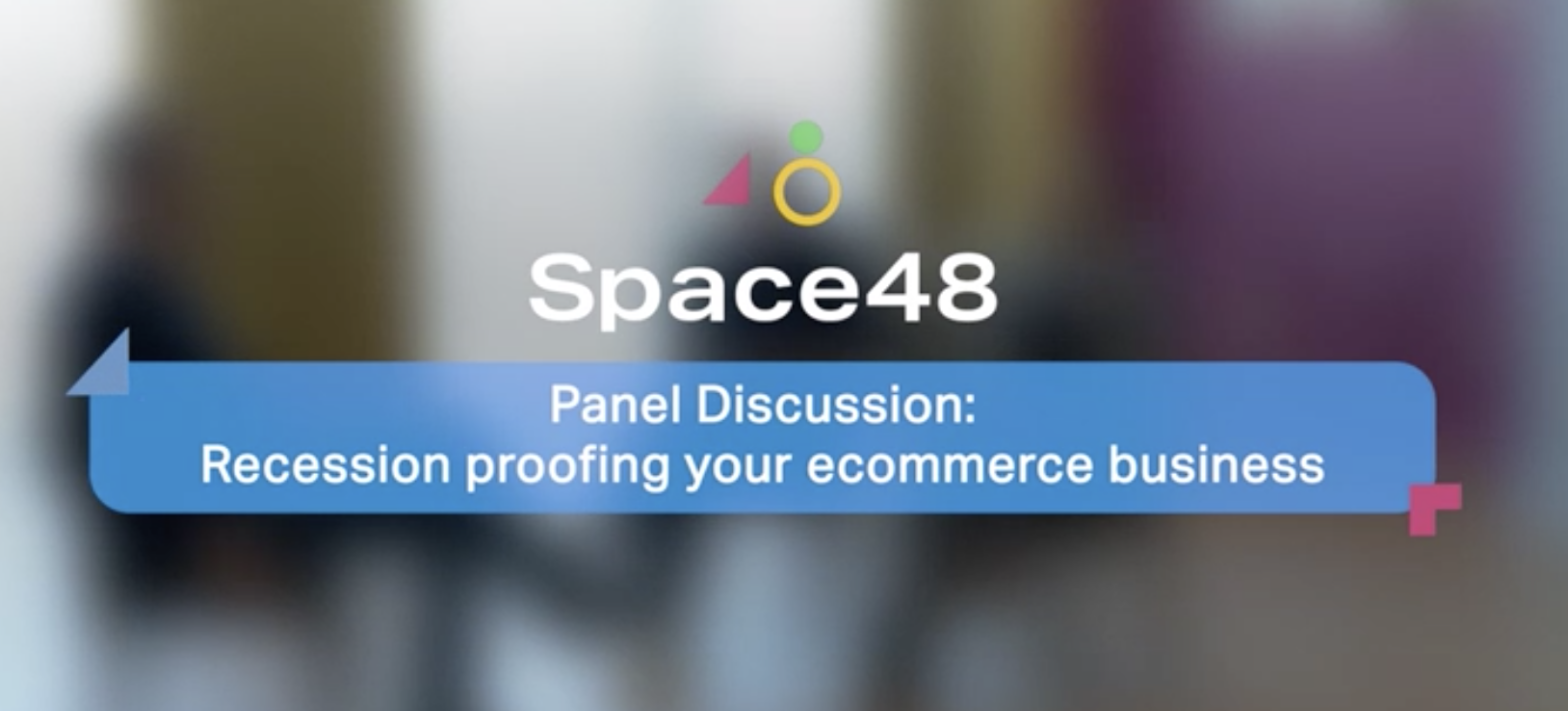
Imagine 2019 Roundup
The sun has set on another year of the Magento Imagine Conference. Almost a year on from their acquisition by Adobe and only a month since the announcement of the CEO, Mark Lavelle, stepping down, it was destined to be a pivotal year in the history of the conference.
It will be remembered as, yet again, a very successful event. It hummed with the vibe of new horizons which wasn’t spoilt by the relatively modest introduction to Adobe.
Imagine is known for its depth and breadth of breakout sessions. Pete Robertshaw and I (no relation but a happy coincidence!) attended as many as possible in order to maximise the number of insights that we could bring back. In this post, we provide the highlights of the sessions that we attended, but we couldn’t possibly cover everything. We recommend reviewing the agenda as most now have published presentations attached.
To help navigate the sessions we cover, here are the highlights as a table of contents:
- Magento are building out the sales channel integrations with Amazon and Google Ads being the first released.
- Magento Business Intelligence is such an underutilised reporting tool.
- Consumers have higher ethical and moral expectations of brands than before.
- Changing the icon on the checkout button could increase revenue by 17% on mobile.
- Be careful not to over-commit to technology.
- It’s so easy to get your Google Feed wrong, be careful what you include.
- 2.3.2 coming end of June.
- PWA Studio is coming on leaps and bounds, expect a reference theme with basic functionality by the end of the year ?
- Online Credit cards are now worth more on the black market than physical cards.
- Machines can “understand” images better than ever which can help with our product enrichment, merchandising and search.
- Adobe are adding AI-powered product recommendations to Magento by 2020.
- What’s new in 2.3.1
Many predicted that it was to be the last Imagine conference. Others thought that it would remain separate for now. On the final day, it was confirmed a middle-ground had been achieved whereby Imagine would be held next year in Las Vegas as part of the Adobe Summit.
Let’s start with the main stage announcements and then move on to the breakout session highlights.
Magento Announcements
There is a huge amount of value from hearing “from the trenches” in the breakout sessions but nothing beats the product and visionary updates from centre stage during Magento’s keynote sessions.
Part of the value comes from the actual announcements. The rest comes from the energy; the vigour and confidence of the leadership team paired with the split-second emotional response of the crowd. I think these raw attributes actually can tell us a lot about the direction of the platform and ecosystem.

In terms of the product, most of the time was spent discussing the recent feature releases as part of 2.3.1 which I’ll discuss later in the post: Amazon and Google Ads Sales Channel as well as the revolutionary and long-awaited PageBuilder.
The freshest of announcements was that Magento will be the preferred technology partner to power Amazon’s branded stores going forward.
They also continue to develop Magento integrations with the suite of Adobe products. Two mentioned on stage included Adobe Stock for easy access to stock imagery within the admin, and machine-learning powered product recommendations coming in 2020.
Understandably, there was little else that was brand new. Magento and Adobe together command respect for a huge feature-base and what’s needed now is the follow-through on the roadmap and continued improvement on what’s already there.
Now to speak on the energy. Personally, I would describe it as “nervous excitement” both on stage and in the audience. Magento had already had an exciting boost in product direction over the last 2 years in advance of the Adobe acquisition and since then it’s felt like things are moving faster than ever on multiple fronts. At the same time, one corporation being subsumed into mega-corporation is enough for anyone to have nerves about how the vision may transpire into reality.
“Ecommerce platform and community growth is a marathon, so one firm foot in front of the other is good with me.”
At the same time, there was a feeling of a changing of the guard. Indeed, this was many attendee’s first imagine conference. This is exciting for us a community but it also means that we have to adjust. Historically, we are used to the extended-family atmosphere at Imagine. A time where we can come back together to share our battles, both the defeats and triumphs. More so than ever, we approach a dawn of where Magento matures further under the proven leadership of one of the biggest technology giants in the world. The nervousness comes from that change and from the uncertainty on what that really looks like. I think it was even there on stage. Gary Spectre and Jason Woosley are the sales and product leaders of Magento within Adobe right now and I think it’s fair to say that they did a great job without Mark Lavelle who stepped down earlier in the year. At the same time, I think that they were missing the visionary leader to rally around and the nerves showed at times. I don’t envy them though, those are some big shoes to fill!
All that said, Imagine 2019 was a good step forward for Magento. And ecommerce platform and community growth is a marathon, so one firm foot in front of the other is good with me.
Data to Insights With Magento Business Intelligence (MBI)
In this lab session, a new session format for 2019, we got to get hands-on with Magento Business Intelligence (MBI). It’s impossible to underestimate the importance of making data-driven decisions within your business and MBI totally gets that. If you’re not measuring a data point in your organisation, you can’t manage it and this is where MBI steps in.
On entering the room, we were greeted by what looked like mission control at NASA – over a hundred Macbooks sitting there waiting to be brought to life by their users.

The format of the session gave us the opportunity to dive straight into the platform and understand just a fraction of what it is capable of. Out of the box, MBI provides merchants with over 100 pre-configured reports that can be placed into customisable dashboards. This allows you to focus on the metrics that matter for your business.
The platform pulls sales data straight out of your Magento database giving you an accurate view of your performance and removing the doubt over whether or not the revenue figures you’re looking at can be 100% reliable. This is often a question when relying on Google Analytics for example.
We got to build out our own dashboard which looked at revenue generated by individual voucher codes over a period of time. What was impressive was the speed at which the report could be configured and applied to the dashboard – it was so easy and this is going to be one of the key drivers as to why many businesses will consider implementing this platform. For organisations that don’t have an in house data team to write complex KPI reports, MBI gives those merchants the ability to rapidly create views of their data which matter to them most.

It took us less than an hour to build out a simple dashboard (not the one pictured above I might add!) and we only scratched the surface of what this platform is capable of.
MBI is available across all versions of Magento, from 1.9 Community through to the latest version of Commerce Cloud, and if you’re already using Magento Commerce at an Enterprise level, the Essentials plan is included for you.
10 eCommerce Trends 2019
I always find sessions which include a Top 10 of something really interesting as they generally help confirm some of the same things we see in the eCommerce space.

“There is a growing rise in ethical e-commerce and businesses who are demonstrating their commitment to helping the environment in whatever way they can are likely to win out in the long run.”
Whilst we won’t cover all 10 points discussed here, some of the key highlights which were great to take away were:
- Consumers are making different decisions when selecting the merchants they want to purchase from. There is a growing rise in ethical e-commerce and businesses who are demonstrating their commitment to helping the environment in whatever way they can are likely to win out in the long run.
- Free returns are going to become a thing of the past and for many merchants, this is a welcome shift in their favour. Returns cost the industry over $400 billion a year and it simply isn’t a sustainable model for online retailers. A lot of merchants are innovating around this space by offering more click and collect services.
- PWAs aren’t going away and were discussed at Imagine 2018 in great detail. They’re here to stay and can offer up enhanced mobile experiences to consumers through increased performance and speed.
- AI is becoming more heavily ingrained in retailers day to day activities and with the amount of data available to them, AI has to play a huge part in taking that data and crunching through it to drive automated decision making.
- Manufacturers and product owners are taking back control of their product data and ensuring the retailers who sell their products have access to the most accurate and up to date information about the products they are selling. This is a win-win for both the manufacturers and retailers. Better product data = more sales.
These points definitely coincide with the conversations we are having with many merchants so it will be interesting to see what the ecommerce landscape looks like in 12 months from now and how many of these trends do come to fruition and stay the course.
The full presentation is available here.
Building Exceptional Mobile Experiences Around The Globe
When it comes to conversion and average order value (AOV), mobile has always been seen as the poor relation to desktop, with many retailers really struggling to match the levels they’ve seen through the traditional larger channel.
This was a panel session focussing on why this no longer has to be the case and what is being done in the e-commerce industry to try to improve mobile experiences, and specifically the checkout experience on mobile.
There is a large community out there really attacking this problem and trying to give retailers tools and insight on how to deliver exceptional mobile experiences to their customers.
How is this being addressed? Well, through a relatively simple knowledge sharing idea which has seen PayPal partner up with HiConversion to develop a series of experiments for retailers to test on their own mobile checkouts which have proven to deliver an increase in RPV – Revenue Per Visitor, a metric which a lot of retailers will not be familiar with. This metric aims to not just look at whether or not a test run on a store delivers an increase in AOV or conversion rate, but what is the overall impact to the business from the change. It looks at the total revenue earned in a time period divided by the total number of visits in the same period.
%20Definition.jpg)
For example, if an A/B test delivers a slight decrease in conversion rate but it actually increases AOV by a significant margin, the overall benefit of the change is positive. If you were to purely look at the output of this experiment based on the impact on conversion, the likelihood is you would never make the change permanent, but by taking both measurements into account, the net benefit is actually positive – it delivers a positive RPV.
This was a really informative session demonstrating some of the results that have been seen from implementing some of these collaborative experiments, with a few surprises along the way.
The most significant results shared for mobile was quite frustrating for many experts on the panel. Simply changing the icon on a checkout button to a padlock symbol increased RPV by 17% on mobile and 7% on desktop (across 63 merchants with $5m+ revenue)
![]()
There were other more palatable successful tests such as implementing auto-cart update, cart items immediately after a quantity change rather than having to tap a call to action.

If you’re interested in finding out more and becoming part of the community, check out mobileoptimized.org. We are also a partner of the initiative.
You can download a copy of the slide deck here, which includes the results of some of the tests run to date.
Creating a memorable experience that matters to your customer and business
This session went through two case studies of businesses that had got caught up in spending time trying to copy what their competitors were doing, without fully understanding why they were making the decisions were. This resulted in them delivering a poor experience to their customers. A great quote from this session was “Competitor anxiety is the business version of keeping up with the Jones’” and that is so true. We’ve seen many examples of this with customers we have worked with over the years.
“Competitor anxiety is the business version of keeping up with the Jones’”
The customer journey has changed. Previously it was thought of as a linear path to purchase but there are so many other touch points a customer will have with your business before that purchasing decision is made. The old way of doing things is no longer relevant so businesses need to be able to provide an experience to their customers that is fit for purpose and delivers on their expectations.
Customers do now expect perfection throughout their buying journey with you, simply because there are so many options for them when it comes to spending their cash. That said, there are examples of businesses, such as Amazon, who can still afford to slip up every once in a while and still retain customer loyalty and that is purely down to the consistent experience they deliver to their customers.
So, when it comes to creating an experience that your customers will want to keep coming back for, ensure you understand these key points:
- The path to purchase is a non-linear journey, it will be messy but try and ensure you’re delivering on your customers’ expectations at every touch point.
- Your competitors will have different user journeys to yours so don’t try and replicate them. Use them as motivation, not direction.
- Make sure you understand your own operational and technological realities up front so you don’t over-invest or over commit in technology which you can’t deliver on.
- Talk to your customers and understand where they are and how they purchase from you and tailor your buying experience around them.
- Use data to drive your decisions, whether that be qualitative or quantitative.
To see the presentation in full, check out the slides here.
Round Pegs Into Square Holes – Exporting Products Into Google Merchant Center From Magento
Getting your product ads to show up in Google Shopping can appear to be relatively straight forward. You just export all your product data out of Magento, convert it into Google’s feed requirements and upload it to Merchant Center right?
Well, it’s not quite that simple! Google’s policies when it comes to its shopping platform are in-depth, to say the least, with one policy linking to another and various restrictions around what you can and can’t do when delivering ads to your customers. A lot of these policies get overlooked by both marketers and developers when putting feeds together and getting them into Merchant Center. It is therefore quite easy to end up doing something which goes against these policies which usually ends up in your ads being pulled or disapproved by Google.
The most common mistakes tend to come from the way products are entered into your shopping feed, usually as a result of exporting your feed out of Magento with no filtering done on the types of products in there. If you’re working with anything other than simple products, here’s what you need to know:
- Configurable products can be added to your feed but you need to make sure the URL in the feed brings the customer to the page with the variant pre-selected. This can be done through the use of a URL suffix which can be appended to the main product URL.
- Group products should not be included in your feed, any product ads referencing grouped products will likely be disapproved.
- Dynamic bundles should not be included in your shopping feed but if you have a static bundle with a single price, this is ok as long as you use the ‘is_bundle’ attribute.
To find out more and the other specialist product types discussed, check out the presentation slides here.
Magento Product Roadmap
For the first time at Imagine, Magento actually put on a session covering what their roadmap looks like in terms of upcoming features. Usually, we get to hear snippets of new functionality but this year we got a full session on the topic which was great to see.
Here’s a summary of what you can expect to see coming over the next 12 – 18 months:
- Ability to use the Adobe Experience Manager (AEM) as the front end but with Magento as a headless platform.
- PageBuilder integration with PWA Studio, with PWA Studio getting a full Venia B2C theme and a B2B theme coming in 2020.
- Adobe Stock integration will allow merchants to bring in Adobe Stock photos in the Magento media gallery when writing content.
- Improvements are coming to Magento Order Management, such as
- Allowing customers to pay with different methods in the same order, e.g. part credit card, part gift card, part finance etc.
- Advanced user permissions and roles so users only get to see the parts of order management they need
- Improved connectors
- Magento shipping is expanding national carrier coverage throughout Europe.
- New chart types and templates are coming to Magento Business Intelligence (MBI). Oft-requested features of enhanced email summaries, thresholds and alerting are also on their way.
- Integration with Adobe Launch (Tag Manager product) which makes it easier to implement Adobe Analytics, which will bring implementation time down to hours instead of weeks.
- Intelligent product recommendations powered by. Adobe Sensei
- The Marketplace is toughening up on the quality of extensions available and there will be improved checks for Cloud compatibility.
- Magento Cloud will see significant updates including:
- Azure support
- Horizontal auto-scaling
- Safe and fast rollbacks
- Log aggregation and monitoring.
- New security enhancements are coming, one of which will look to completely eliminate the possibility of X-Site scripting.
- GraphQL API additional coverage, including B2B coverage in 2020.
- A more modular architecture is coming to Magento Commerce meaning it will be easier to plug in best of breed 3rd party tools and upgrade them in isolation.
Magento Core backlog is available to view on Github.
The Magento Community backlog is available to view here on Github
Session Slides
Stories from the Edge: First Explorers of Progressive Web Apps
Magento first announced their commitment to bringing a Progressive Web App (PWA) solution to the product back in 2017. Two years on, a lot of progress has been made, both by the core project team as well as the community. The Imagine conference provides a great opportunity to highlight the challenges and achievements made to date.
Little time was spent on defining a PWA. The only description given was that it is a combination of “the web, done right” while the web is moving to a network of applications as opposed to a network of documents.
There are multiple projects and companies pushing PWA movement forward in the world of Magento and it was good to see their contributions credited:
- There are agencies around the world that have been involved pushing PWA and PWA Studio forward. Whether through core contribution, early adopters or experimenting and testing. These include Experius, Inchoo, Creatuity, JH and Scandiweb.
- Excitingly there is even one merchant in particular, Bargreen, that is so excited about the future of PWA Studio that they acted as an extended member of the core team, making significant code contributions to the project.
- PWA Studio isn’t the only PWA ecommerce solution out there. Others have been forging ahead with their alternative approaches, including VueStorefront, Deity and FrontCommerce.
In terms of PWA Studio’s progress specifically, there are multiple ongoing initiatives:
- Core components, aka Peregrine
- Reference theme, aka Venia
- Middleware specification, aka Upward – (delivers the app and ferries requests to backend services, e.g. Magento).
Most notably for those wanting to get up and running quickly, there is a new starter kit available that can be installed with a npm or yarn one-liner:
npm install @magento/pwa

As can be seen, while there’s a lot of functionality already there, there’s still work to be done. it’s reasonable to consider that there’s a long way to go before there is a reference theme of components that can be used to be considered a starting point for new Magento projects. While the end of 2019 was mentioned, it’s unlikely that this would provide like-for-like functionality when compared to the Luma theme.
Other work earmarked for 2019 includes adding and updating functionality to use the new GraphQL endpoints over their rest counterparts as they are released as part of core Magento updates.
On the roadmap for 2020 is compatibility with the B2B suite and PageBuilder. However, it’s foreseeable that the PageBuilder integration may arrive sooner if the community contribute it back to the core project. It seems like Creatuity have already been working on integration for their experimental PWA Studio project for Rural King and it’s highly likely there will be other partners looking to do the same thing as well.
Ultimately, it’s clear there’s still a lot of work to do before the majority of merchants can get involved.
There’s no doubt that this is an innovative and forward-thinking project. Not just because it’s PWA but also because of the “community engineering” team that engages with and supports contributions from the community. Weekly progress calls and discussions are done in the open.
So when should you look to build with PWA Studio. In my opinion, that depends on where you consider yourself to be on the diffusion of innovation model chart. Are you an early adopter or late majority?

While not marked on the chart, we can consider there to be a chasm in the early adopters’ section which describes the difficulty of taking technology like PWA or project like PWA Studio past niche and towards the masses.
- Innovators: get involved now. Take part in the weekly calls, find tasks that you can work on to contribute whether through documentation, testing or code.
- Early adopters may also get involved at any time during 2019.
- For those that consider themselves the early majority, keep an eye on progress and consider getting involved during 2020.
- For those that consider themselves likely one of the late-majority, this likely isn’t going to be useful to you until 2021, particularly if extension compatibility is important to you (to be clear, this is a personal prediction)
Whichever group you are in, if you would like to find out more, please find the documentation at https://pwastudio.io.
View presentation slides.
Lessons in Fort Building: Magento Community vs Hackers
Talesh Seeparsan is a cyber-security expert that has worked in the Magento Community for years. This means that he’s not only a go-to person when it comes to protecting your store or investigating an attack, but also that he understands how the attacks from bad actors have evolved over the years.
“A credit card stolen from a website is now worth more than a physical card.”
One notable development of this industry is that, at this point, a credit card stolen from a website is now worth more than a physical card.
Here’s a summary of the history of attacks against Magento that Talesh took us through:
- In the beginning, the Magento core was attacked directly with automated attacks. These can be protected against through quick application of patches and security scanning with tools like MageReport and the official Magento Security Scanner.
- Attackers then changed their target to popular third-party extensions.
- When vendors and merchants patched those, they moved to attack Zend Core which is a PHP framework that Magento is built on. Magento quickly took to taking on the responsibility of patching this now unsupported version of the library.
- All the while, bad actors have been building out their infrastructure of automated systems to attack and extract credit card data from sites.
- More recently, attackers have upped their investment in phishing as the people managing sites are susceptible to social engineering.
It’s a good sign that attackers have had to update their methods of approach regularly, it shows that our defences are working, says Talesh.
Talesh’s talk was far from doom and gloom. It was fascinating and if anything combatted the fatalism that being hacked is inevitable. Just taking a few simple steps such as patching your store, having an automated scanner and firewall in place will catch the majority of attacks.
View Slides
Future Directions in Commerce: Content Intelligence Leads the Way
Gina Casagrande, a principle evangelist at Adobe Experience Cloud gave an insightful talk on the multitude of ways that machine learning can be used to understand and organise product data, particularly through “understanding” images.

The first is through visual search where customers can take or upload a photo to search for similar products. This has been found to increase conversions by up to 10%. This is likely more valuable for large stores, marketplaces, and fashion sites right now but it’ll be interesting to see how consumers adopt it. The same technology can also be helpful for merchants as it can find their products on social media, even if it hasn’t been tagged.
Second only to fraud detection systems, product recommendations is one of the most common places to find machine learning being used on ecommerce stores. The value-add that “understanding” the image can bring are being able to recommend products that are visually similar or dissimilar. Visually similar is likely to be good for upsells, visually dissimilar is more useful for accessories.
I have worked with multiple merchants that have migrated from colour being a configuration on a product, to having separate products for each colour which are then linked. This is advantageous for many reasons, but one of the downsides can be that when the root product is shown in categories or search, it can be hard for customers to see the wood for the trees as all the colour variants are shown together and the customer is unable to see the breadth of the catalogue. If the search and merchandising engines have more of an understanding of the product catalogue and what’s a similar product or not, and one way this can be done is through visual similarity, then the breadth of relevant products can then be shown.
The power of image analysis can also be used for organising product gallery images to ensure consistency or find if there’s a particular view missing. This is actually a project that I’ve explored previously with IBM Watson to identify which images contained swimming pools on a Spanish real-estate site.
“What AI can do is provide step improvements in almost every area of our work.”
These are just a few of the ways that it can be used. In my opinion, less often is AI going to provide features that blow all other solutions out of the water though that may happen longer term. In the short-term, what it can do is provide step improvements in almost every area of our work. In terms of product enrichment and merchandising that could mean ensuring consistency, and finding mistakes and available optimisations in catalogue upload or even automatically creating colour filters by correctly pulling out the colour of the product.
Read the slides for more information.
Bringing AI powered personalisation to Magento Commerce
Members of the Magento product team shared how they’re bringing Adobe Sensei, the AI technology, into the Magento product. The first integration is going to be intelligent product recommendations that can be managed directly from the Magento Admin.
“35% of Amazon’s retail revenue comes from product recommendations”
Recommendations are a key sales tool. It was quoted that 35% of Amazon’s retail revenue comes from product recommendations.
Magento’s new solution would be built with an API-first mentality which means it should also be available simultaneously for headless technology solutions.

Merchants that are interested can get involved in a beta during 2019 and public release is slated for early 2020.
Finally, Ryan and Jonathan shared information around the open-source integration with Adobe Launch, Adobe’s tag manager product. It will provide a data layer that also provides the data required for Adobe Analytics integration. Adobe Analytics itself will soon have some additional ecommerce dashboards and merchants will benefit from Sensei-powered features like business health monitoring.
View the slides.
What’s New with Magento Commerce 2.3.1
This March brought us the point release of Magento 2.3 and along with it came the full release of many of the features that were announced back in November. From a merchant perspective, there are three huge new features to the platform: Amazon Sales Channel, Google Shopping Ads Channel and PageBuilder.
Amazon Sales Channel (https://theblog.adobe.com/amazon-sales-channel-in-magento-enables-merchants-to-expand-customer-reach-and-grow-revenue/) allows native, bi-directional integration with Amazon Marketplace so that products and orders can be synced to and from Amazon. It even provides intelligent repricing to win back the buy box, so this really is a high-value addition. What’s more, it’s available for free for all merchants.
Another high-impact feature for all merchants is the Google Shopping Ads Channel (https://theblog.adobe.com/google-shopping-ads-channel-in-magento-delivers-a-fully-integrated-end-to-end-google-advertising-solution/). On top of providing automated synchronisation between the two platforms, it provides the ability to manage campaigns from within the Magento admin.
Finally, Magento 2.3.1 brings up the long-awaited drag-and-drop PageBuilder functionality to Magento Commerce. There are efforts to bring this to Magento Open Source merchants as a separate paid extension but as this would be the first piece of functionality ever delivered in that manner, we understand that there are few bumps in the road for Magento & Adobe to navigate before that can happen. Here’s hoping for 2020.
Smaller feature announcements include:
- Updated DHL, PayPal Express Checkout and Authorize.net integrations
- A distance-based sourcing algorithm added to the Multi-Source Inventory project
- Magento Shipping now supports Click and Collect and Shipment Cancellations. Additional region-specific carriers have also been rolled out, so look out for those as well.
Under the hood, Magento and the Community (through the Community Engineering team) are pushing forward on a number of fronts to better the platform. From increased GraphQL coverage to support headless integrations such as through the PWA Studio initiative, to a declarative-based approach for more reliable database schema migrations.
Other updates include support for PHP 7.2, Elasticsearch 6 and Redis 5 and improved encryption as well as the regular bug fixes and performance improvements.
Importantly, there was also a change in the support policy for future releases. Rather than each 2.x release getting 12 months’ support, it will now get 12 months of product updates beyond the next 2.x release, (e.g. 2.3 will get 12 months of updates following 2.4 release). Similarly, there will be 18 months of security patches following the next major release.
If you haven’t already upgraded to Magento 2.3.1, 2.3.2 is slated for the end of June so bear that in mind. It’s due to include minor fixes and performance improvements.
…And breathe!





